In 2021, Christopher Townsend explained the visual effects work on Shang-Chi and the Legend of the Ten Rings. He’s back today to talk about the new season of Loki.
How did you get involved on this series?
I’d been a fan of the first season, so when the opportunity arose to work on the second of Loki, I was thrilled. It’s my first foray into streaming and long form storytelling, having previously exclusively worked in features, and it was refreshing to work in a medium where moments could breathe a little longer.
How was the collaboration with the showrunner and the directors?
Kevin Wright, Marvel Studios’ Executive Producer, and Aaron Moorhead and Justin Benson, the directors of four of the episodes and also EPs, were amazingly collaborative. We discussed, at length, what we wanted out of the new series, and Aaron and Justin had a clear vision for the look and style for the show.
What are the main changes they wanted to do after the first season?
Season One established a very clear visual style, and we were fortunate to have back many of the same crew, including Production Designer Kasra Faharani, who also directed one of the episodes. He brought a very specific visual language to the show, which we used in the second season too. However, we wanted to go a little grittier, more lofi, and use depth hazing and add an even more considered approach to the camera. We had a joke that we were Team No Glow, that we wanted to try and create more tangible effects without resorting to glowing things too much. At the outset, early in preproduction, we agreed that if we could do something practically, we should. That meant that the VFX work was used just for things that required it; everybody across the board brought their A game. If I had one word to describe the big difference between how we often work and Loki Season 2? Ceilings!
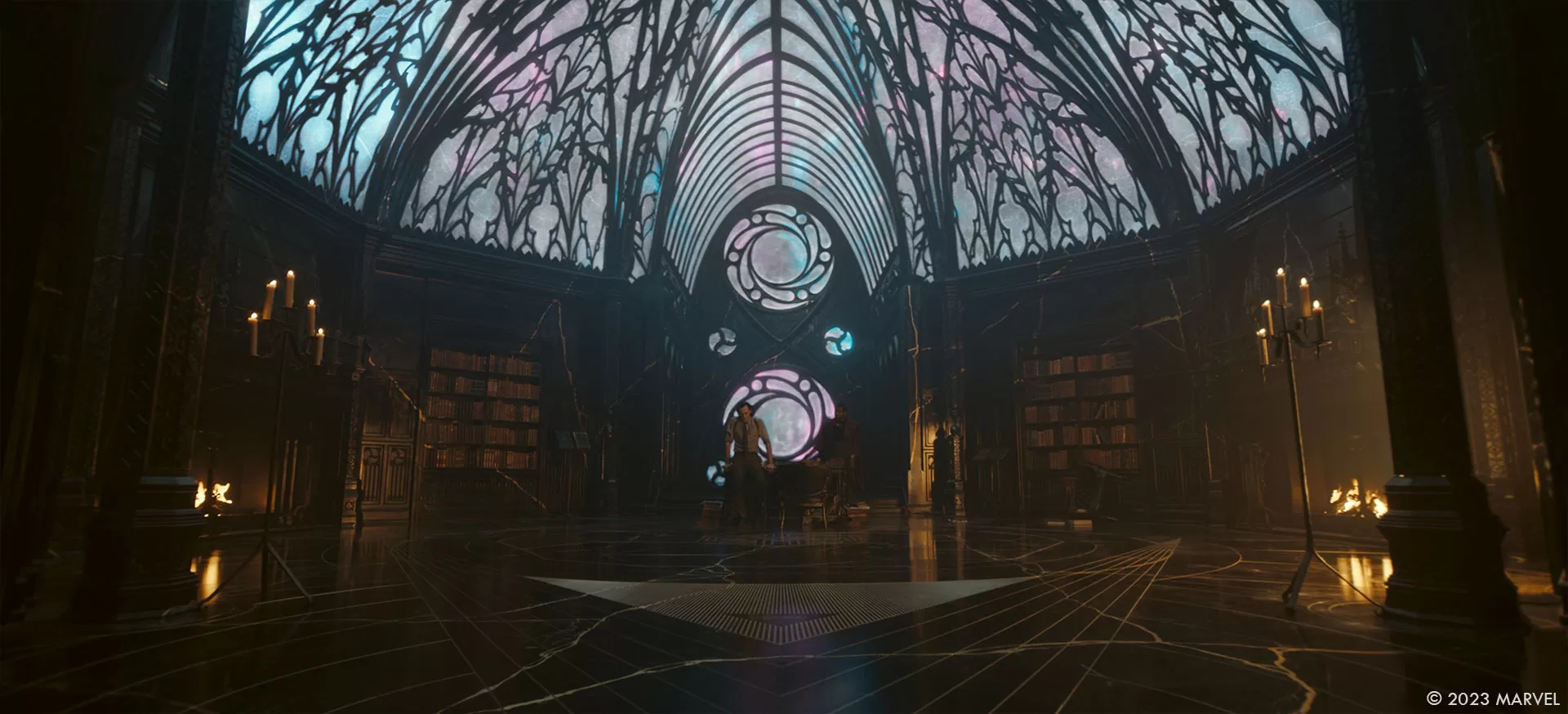
How did you organize the work your VFX Producer?
Allison Paul was the VFX Producer on both seasons, and her knowledge of everything Loki was indispensable. There were several companies that had worked on the first season and they brought that understanding to the second; we wanted to improve and enhance things where we could, but already having a shorthand was really useful. We broke the scripts down, episode by episode, organizing similar types of work as much as we could. Having six episodes, with six different final delivery dates, made things a little more complicated but ultimately worked out really well.
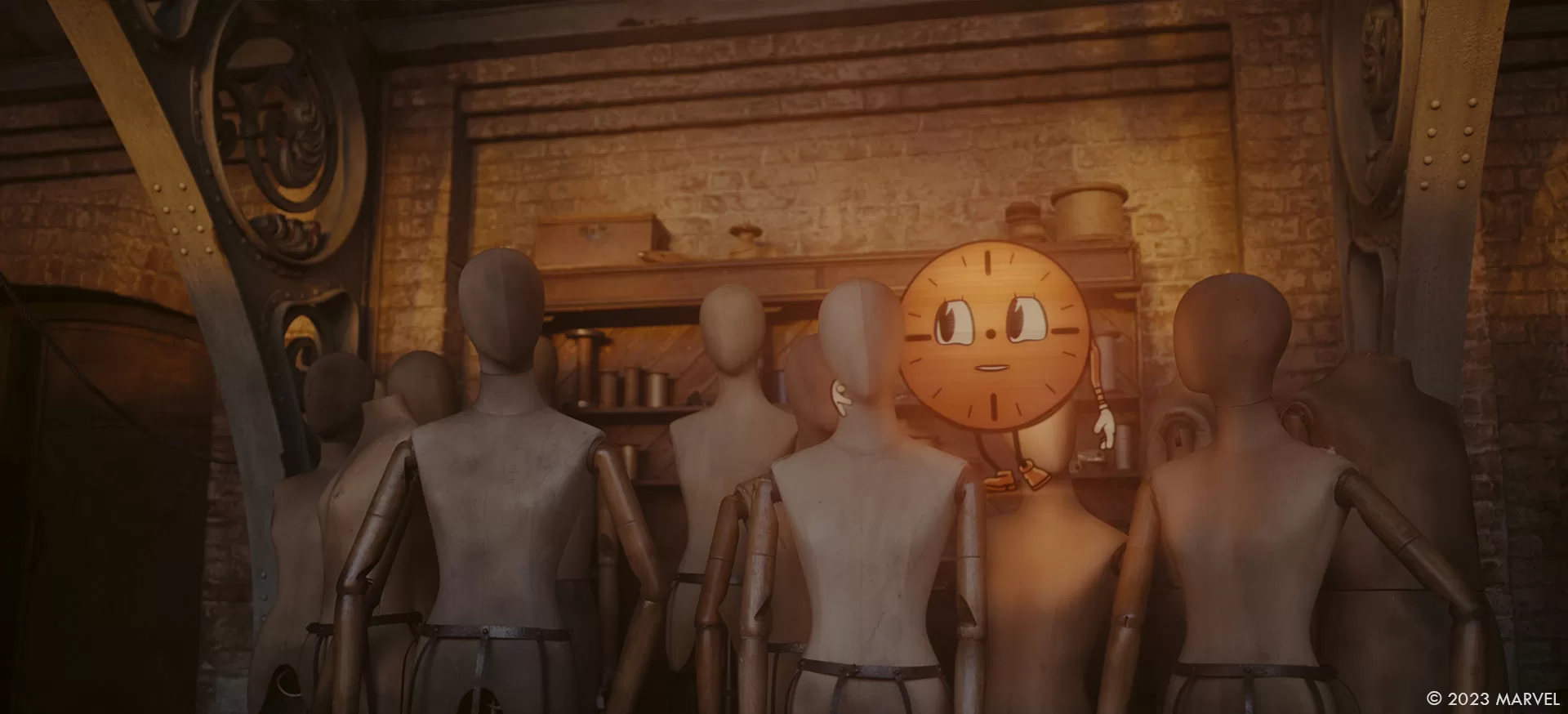
How did you choose and split the work amongst the vendors?
We chose VFX vendors according to the work, both in terms of type (animation, heavy FX, environment, conceptual etc) and volume of shots. Playing to a vendor’s strengths is often the best approach, but sometimes asking somebody to do something new for them elicits exciting solutions and gets the creative juices flowing.
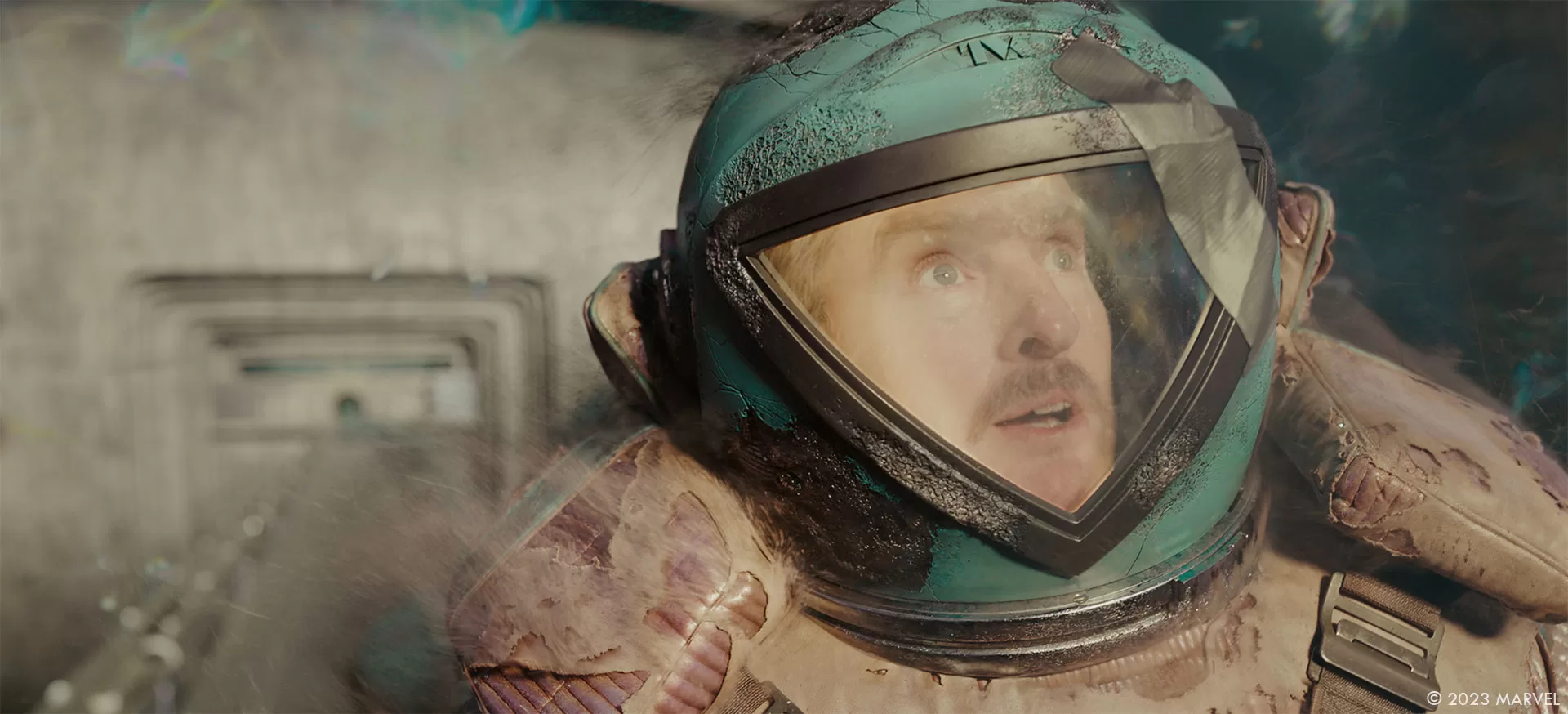
Can you elaborates about the creation and the destruction of the TVA?
We see various parts of the TVA and earth destroyed as timelines are pruned. Using the same general motif of strands of time as used elsewhere in the show (timelines, weaving threads in the Loom, the stringy aspect of Time Slipping etc), and theoretically what happens if you were to be sucked into a black hole, we created what we called Spaghettification. CG models of objects and characters were created, then extruded into tangible, physical strands, rendered as their source colors and textures. Framestore established the look and did most of the Spaghettification effects seen throughout the show, and Trixter spaghettified Timely.
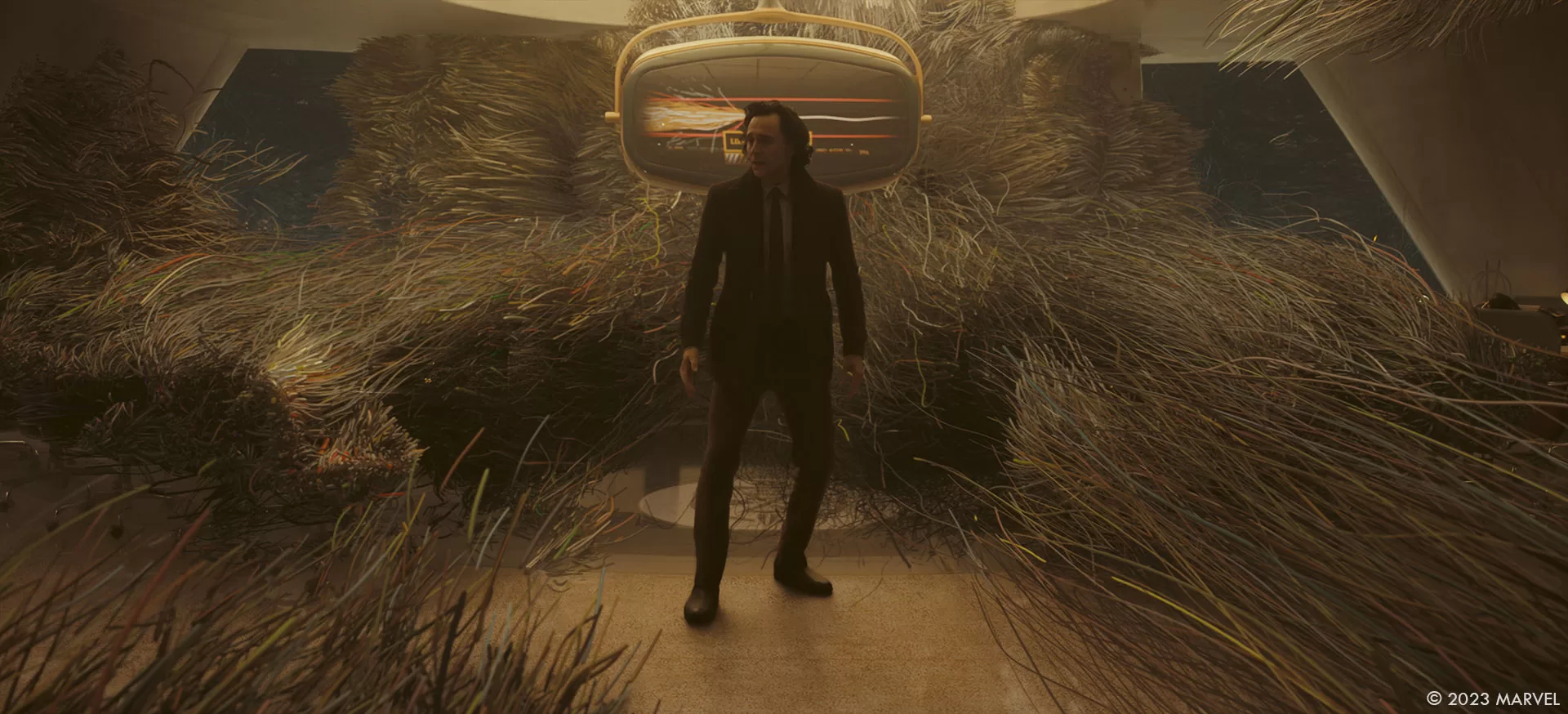
This new season is taking us back in time, Can you explain in detail about the design and creation of the Chicago sequences?
On the backlot at Pinewood Studios in London, the Art Department beautifully recreated a large portion of the Midway, the concourse flanked by various country’s buildings in the 1893 Chicago World’s Fair, and a single SFX gimballed carriage for the world’s first Ferris Wheel. Industrial Light and Magic then extended the set into an expansive environment, adding in more crowds, both photographed and digital, and completed the wheel into its imposing form. They created a full nighttime CG version of the white city portion of the Fair, with is splendid white buildings surrounding waterways, as seen from the top of the wheel. We see it again in a different view from a steamship, itself based on a small set piece which ILM extended, as we look across Lake Michigan.
How did you create and animate the time disappearance & time sliding effects?
Time Slipping, which Framestore undertook, was an effect we had a lot of fun creating. We concepted many different looks before finally ending up with the dramatic effect seen. Once the hero performance take was done, we’d have all the other actors step off set, we’d bring out a small green screen, repeat the camera action and have Tom Hiddleston give us a variety of different actions that we could use as interstitial poses; I asked him to give us a range of slow, aggressive, swirling, reaching, painful, stoic and fast actions, and once we had all the pieces, we shot a clean background plate, without Tom. With all of those different passes, Editorial would create a cut showing the intended pacing of the moment, and VFX then selected individual bits from the different passes, and slap comp them together. Once Editorial was happy with the selects, we tracked the poses and created 3D versions of them. We simulated a gooey, stretchy, taffy like connection between the actions, rendered it out with appropriate colors and textures for skin, clothing and hair, then carefully comped it together. Once we were happy with that stage, we hand painted an added layer of gruesomeness and gore in select places to make the effect feel even more painful and shocking. It was a great collaboration of brilliant and committed performances from Tom, and our VFX team who tackled the challenge with artistic sensitivity and finesse; everyone knew what was required and we all knew where we were aiming.
What kind of references and influences did you receive for these effects?
With the initial brief of slipping through time, we cast a wide net, looking for inspiration for the aesthetics and desired emotional impact. We looked at everything from long and multiple exposure photography, cubist paintings and portraits by Francis Bacon, before finally settling on an amalgamation of many different things. We wanted it to still have a stringy component, as it was all connected to time, which we generally visualized as threads. The directors wanted it to feel very physical and have an element of horror gore, so we suggested a stretchy, taffy like stringy effect connecting the various moments.
How did you create the time core environment and its time branches?
Trixter created the Temporal Core Environment, where we see the galactic Loom weaving time together. The massive scale of the Loom, its importance within the entire season, and the narrative storytelling of what it’s actually doing, told through animation and multiple different stages of increasing overload, was a huge challenge. Based on loose sketches from Marvel’s visual development department, and on initial story ideas in the script, Trixter’s concept department started presenting mood boards, and first ideas of what the Loom could be, how large it was and the mechanics of its actions. The look of the timelines, now more rainbow colored and more tangible and physical than the blue and purple glowier ones that Trixter created in Season 1, also had to be completely reimagined. And figuring out a way to get from that first season look to this, within the same frame, while making total narrative sense, was also a challenge, Over several months, those ideas were refined until we had the looks of the various stages. The Loom itself was modeled and textured to show is vast scale, the timelines were animated and simulated, flowing, backing up, weaving, all the while telling the story of impending doom. Filling the space with increasingly powerful solar winds and prismatic flares, helped to describe the volume and show the physical danger, but finding the right looks of those elements, took a long journey. In the first and last episodes, we see what effect the environment has, as it shreds (almost entirely CG) character’s oversized suits in a dramatic fashion. Set against the infinite exterior wall of the TVA building, with temporal probes and a delicate gangway, the world had to be both beautiful and ominous, and work throughout the series in many guises.
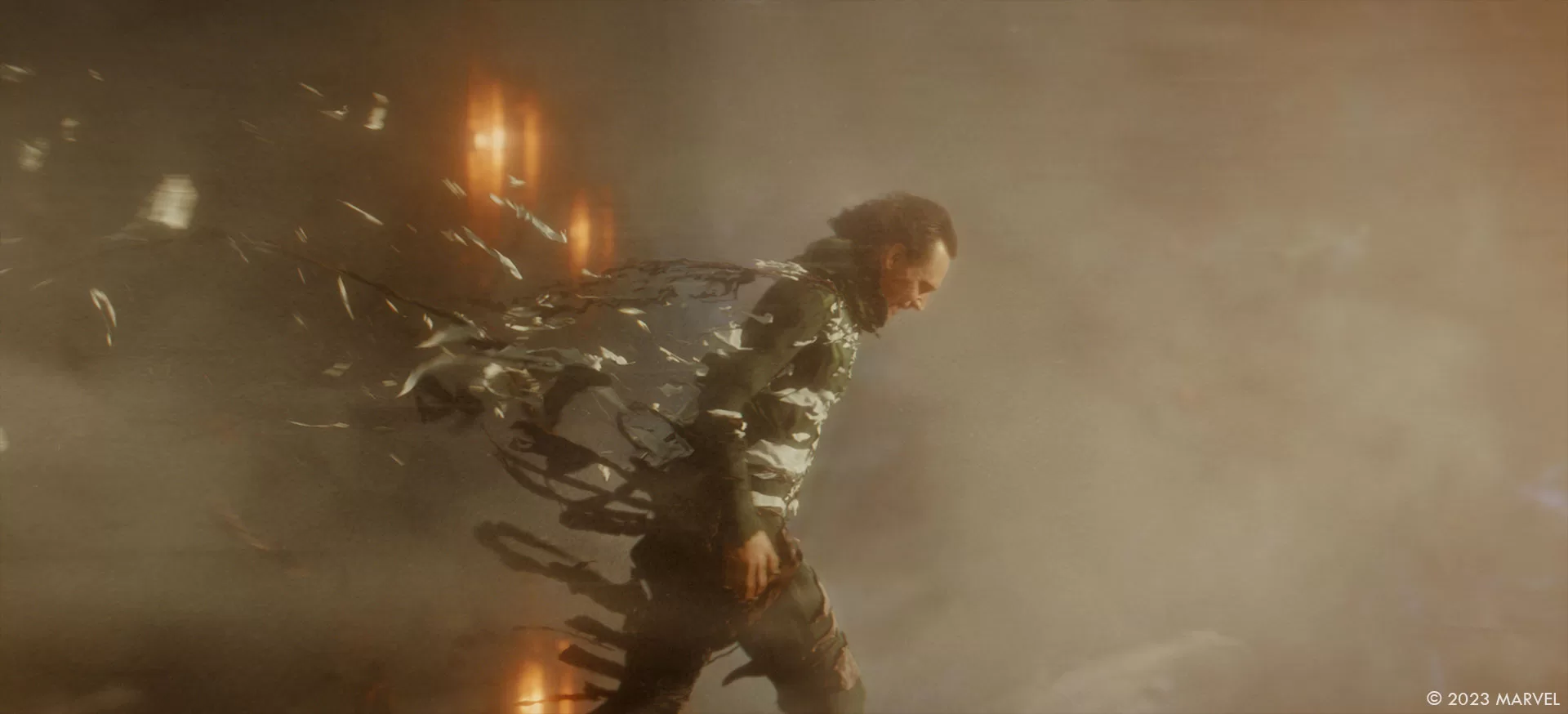
Can you elaborate about the design and creation of the impressive God Loki final sequence?
We prevised the entire sequence, working with the directors to create the right pacing and shot design, then presented the piece to Tom Hiddleston. Everyone was hopeful that we could both pull it off, as it was huge and operatic in scale, but also that the audience would feel that such a surreal and stylized sequence was earned by this point in the series, and on Loki’s journey in the MCU. Unusually on this show, we shot on a bluescreen set, with stairs and wind machines and our actor miming grabbing at strands; that performance, and the intensity of the acting, really helped to sell the drama of the moment. Framestore then took Trixter’s original environment, and recreated the Loom in order to blast it apart. They reimagined what dying timelines would look like, and then how they could be reinvigorated with Loki’s magic; we wanted things to remain tangible, but to imply a never ending level of detail and scale, as each strand represented a whole branch of time. Framestore referenced the first series’ green portals to take us into the He Who Remains’ Citadel world, where Loki, almost Atlas-like, drags time itself up the stairs, and as the gold from the veins in the black rock seeps upwards, it gilds his throne. Filling the space with pockets of fog, helped to create the theatrical drama we were after.
Which sequence or shot was the most challenging?
One of the final shots, revealing Loki at the heart of a galactic Yggdrasil tree formation, was probably our most challenging. Framestore created the long, powers of ten shot, with complex simulations weaving together timelines as we race out, and rendering the multiple layers became a challenge in its own right. However, creatively finding just the right balance of delicate simulations of the blossoming blue and purple timeline ‘foliage’, set against the green boughs of the tree, the galactic cloud formation and camera move to show parallax and scale, and the definition of the circular motif that leans in to Norse mythology, those were the real challenges to create what is hopefully a beautiful and iconic image in the MCU.
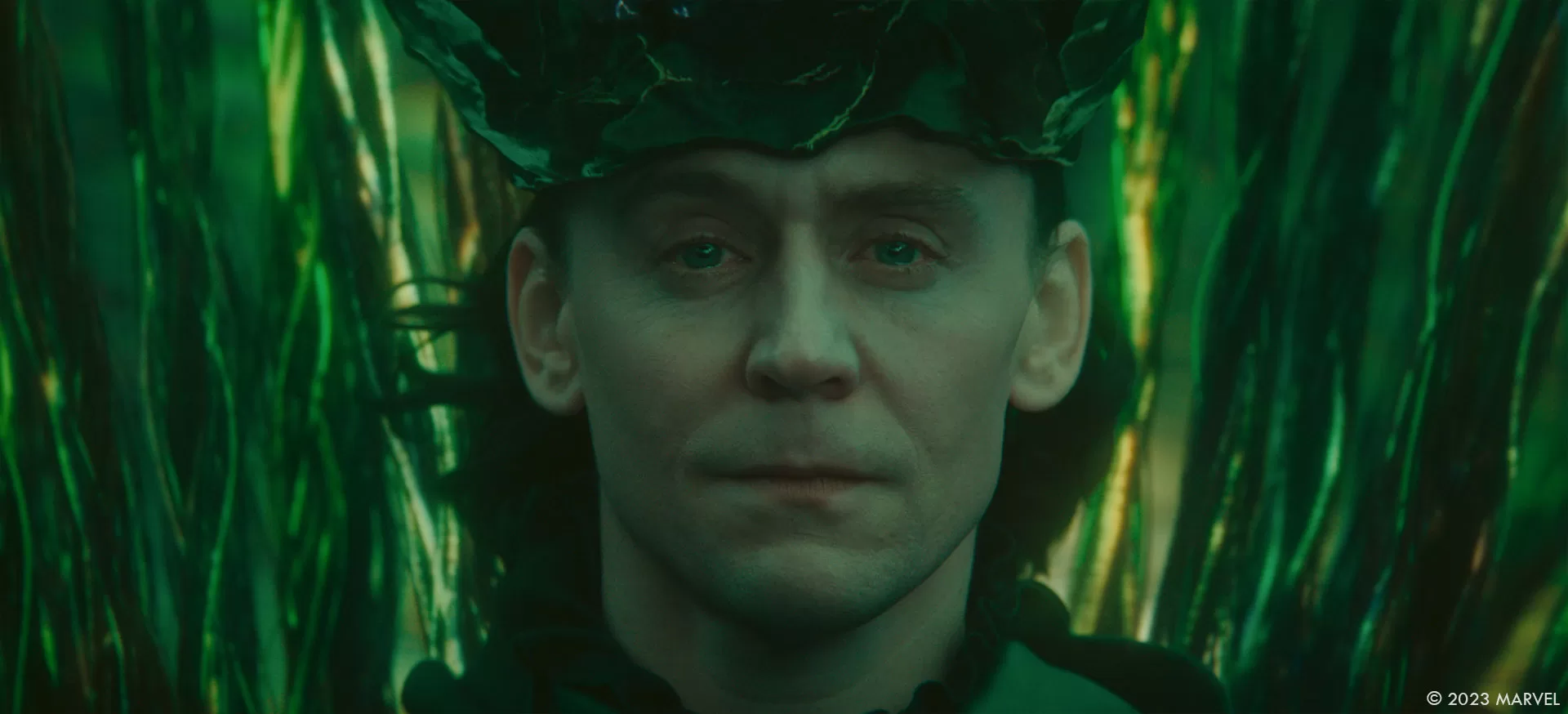
Is there something specific that gives you some really short nights?
In so many ways, this was a dream project. Brilliant collaboration throughout, and being part of something we knew we were all going to be proud of, makes the job a lot easier. However, there’s always things that you wonder going in, how are we going to do that? But that’s what keeps things interesting!
What is your favorite shot or sequence?
I love the show and am proud of all of it. Other than what we’ve discussed above, I really liked what Rising Sun Pictures did with Miss Minutes, adding new subtleties to her performance, and what FuseFX did with the trash compactor style Gizmo, based on Time Door technology and their seamless recreation of the McDonalds exterior environment. But, my favorite sequence is probably the spaghettification of the record store with Sylvie, in episode five. It was very carefully prevised by Framestore’s inhouse team, and shot exactly to that; Framestore then artfully eviscerated the world and Lyle, the store owner. It was a wonderful blend of production design, camera, lighting, performance, music and VFX.
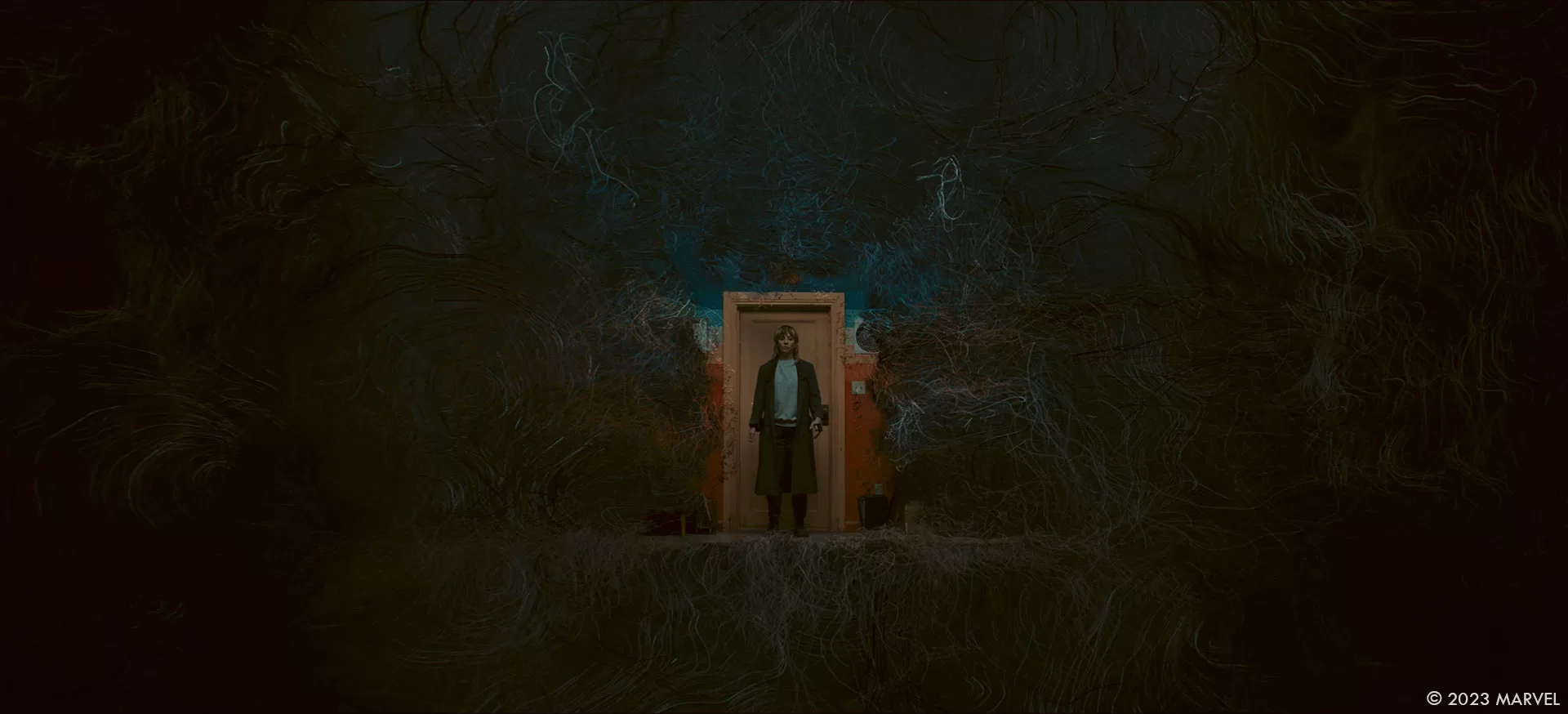
What is your best memory on this show?
We had a great team so getting a chance to create beautiful images with such a talented group of people across the world is an amazing privilege. Allison Paul and Harrison Goldstein led our production team and Sandra Balej was our additional VFX Supervisor and did a lot of the creative heavy lifting. Our shooting crew in London, with onset Supervisor Marcus Dryden and Lead Wrangler Taskin Kenan heading up the teams, and Steffen Hagen and Erin Laurence Production Managing, helped ensure that we got everything we needed, and all our VFX vendors brought a passion and artistry to the project that can be seen on screen.
How long have you worked on this show?
Nearly two years.
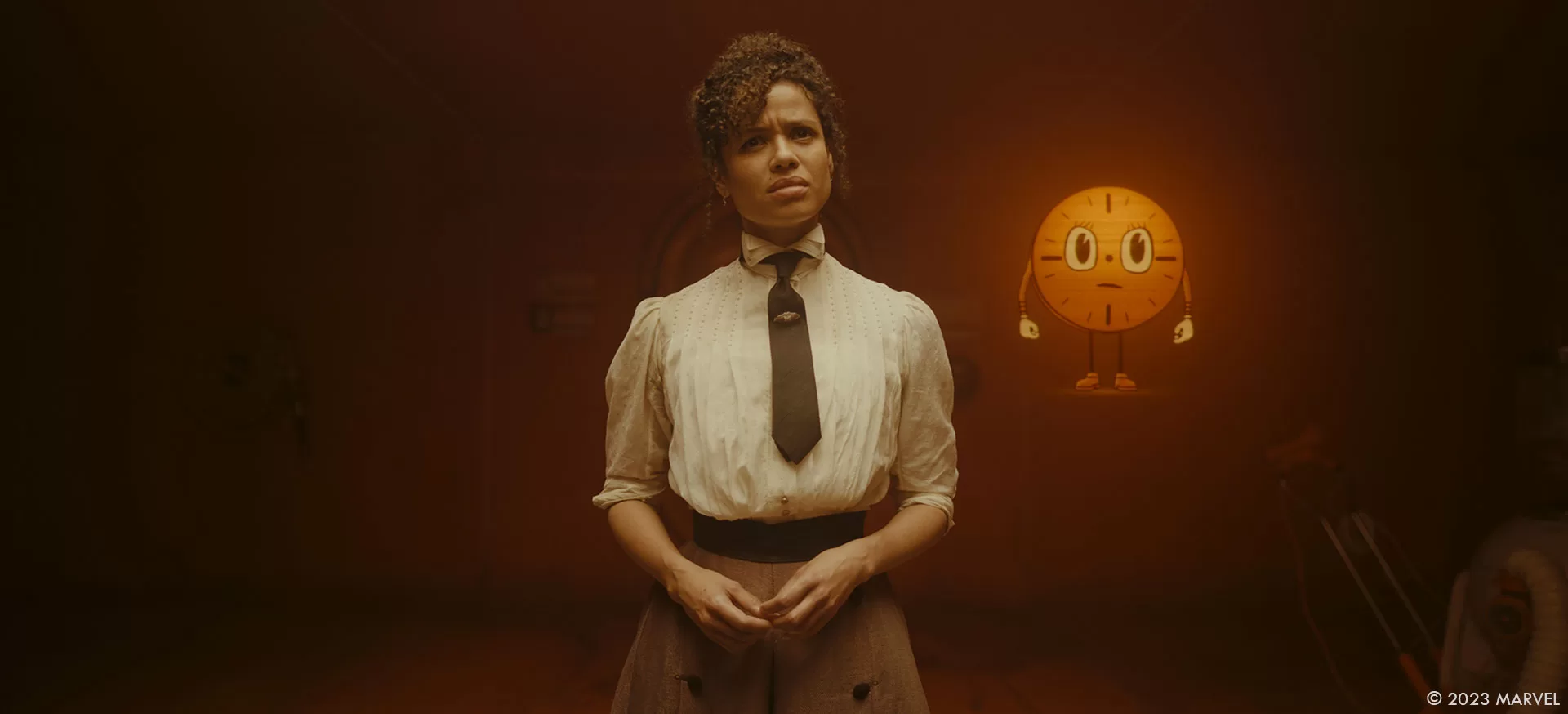
What’s the VFX shots count?
1210 shots, created by 7 different companies : Framestore, Trixter, Industrial Light and Magic, Rising Sun Pictures, FuseFX, Cantina Creative and Lola VFX.
What is your next project?
The various strikes have had a massive impact on the entire industry, a things have been pushed around quite a bit, so things are still being discussed.
A big thanks for your time.
WANT TO KNOW MORE?
Framestore: Dedicated page about Loki – Season 2 on Framestore website
ILM: Dedicated page about Loki – Season 2 on ILM website.
Trixter: Dedicated page about Loki – Season 2 on Trixter website.
Loki: You can watch Loki on Disney+.
© Vincent Frei – The Art of VFX – 2023






